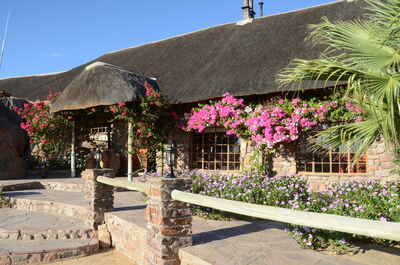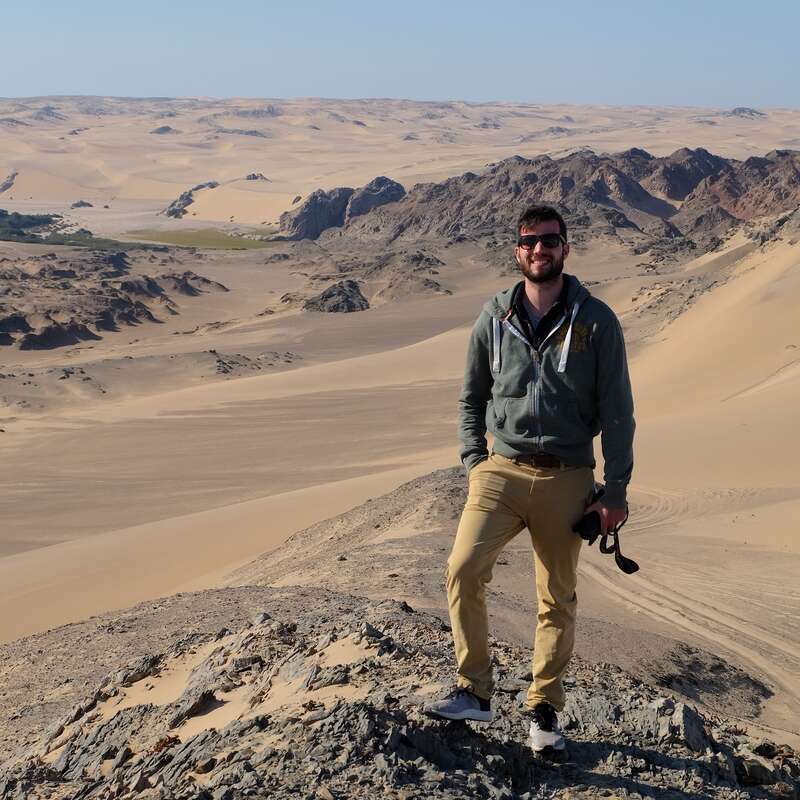About Canyon Village
Close to Namibia’s Fish River Canyon, Canyon Village (previously called Canon or Cañon Village) is beautiful ...
... located at the base of a number of bare rocky hills, or kopjes, in the middle of a vast rocky landscape. Although the lodge is modern, a traditional feel comes from a series of attractive murals that depict various scenes from when the Nama people used to inhabit the region.
Canyon Village has a great location near to Fish River Canyon, allowing self-driving guests to explore the area on their own. The lodge is often frequented by groups, but don't let this put you off as its friendly service, pretty views and welcoming staff make it a good place to base yourself to explore this area of Namibia.
Our view
Canyon Village has a great location near to Fish River Canyon, allowing self-driving guests to explore the area on their own. The lodge is often frequented by groups, but don't let this put you off as its friendly service, pretty views and welcoming staff make it a good place to base yourself to explore this area of Namibia.
Accommodation
42 chalets
Children
Fine for all ages
Open
All year
Activities

4WD Safari

Guided walking safari

Horse-riding

Private activities

Self-guided walking
Traveller reviews of Canyon Village
15 real, un-edited reviews from Expert Africa's travellers.
Arrived 6 Sep 2024, 2 nights
"Canyon Village review"
Overall rating: Excellent
Arrived 3 Nov 2023, 2 nights
"Canyon Village review"
Overall rating: Good
Arrived 24 Aug 2022, 2 nights
"Canyon Village review"
Overall rating: Excellent
Arrived 10 Oct 2019, 1 nights
"Spectacular setting"
Overall rating: Excellent
Arrived 10 Oct 2016, 2 nights
"Canyon Village review"
Overall rating: Excellent
Arrived 10 Oct 2016, 1 nights
"Great stay at Canyon Village"
Overall rating: Excellent
Arrived 5 Sep 2013, 2 nights
"A good place for visiting Fish River Canyon"
Overall rating: Good
Arrived 11 Sep 2008, 2 nights
"Canyon Village review"
Overall rating: Excellent
Arrived 27 Aug 2008, 2 nights
"Canyon Village review"
Overall rating: Excellent
Arrived 20 Jul 2008, 2 nights
"Canyon Village review"
Overall rating: Average
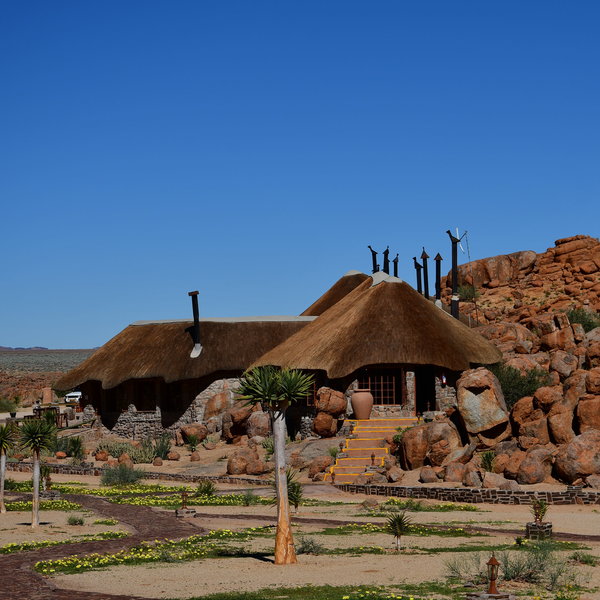
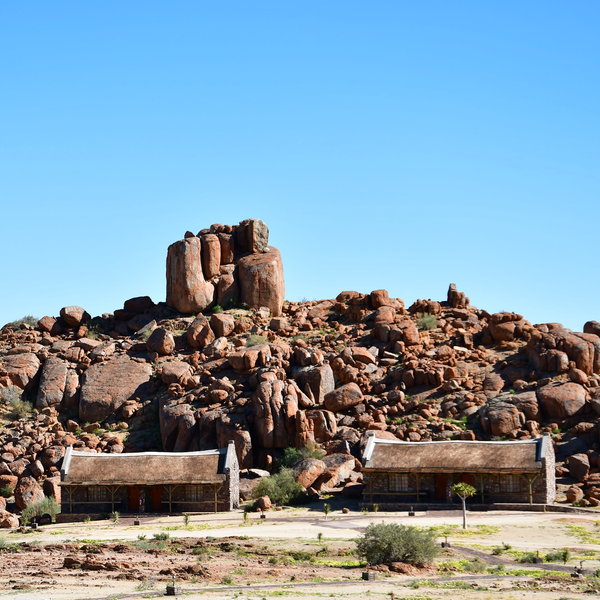
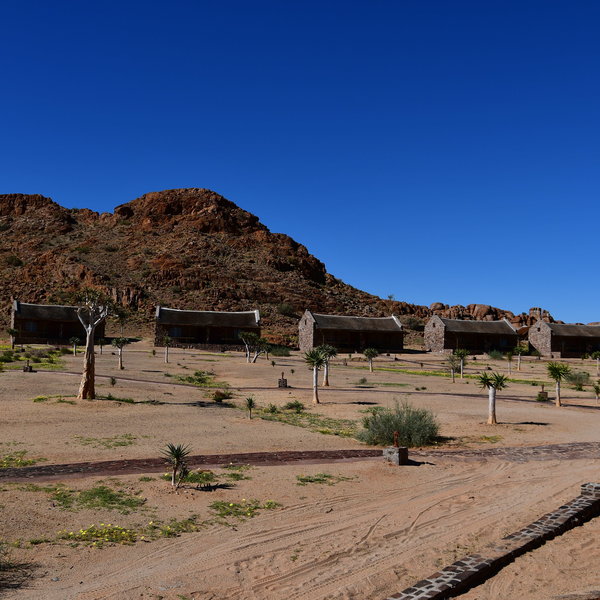
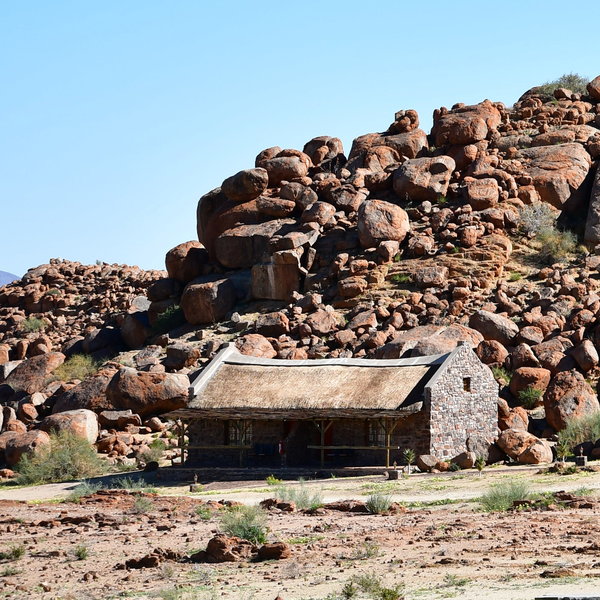
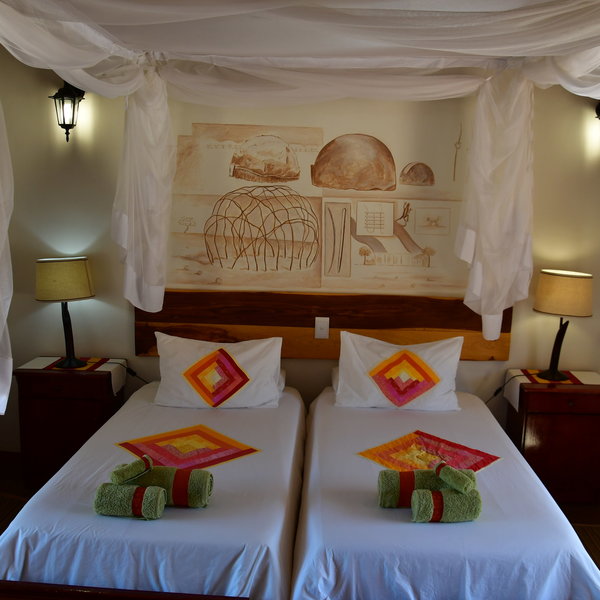

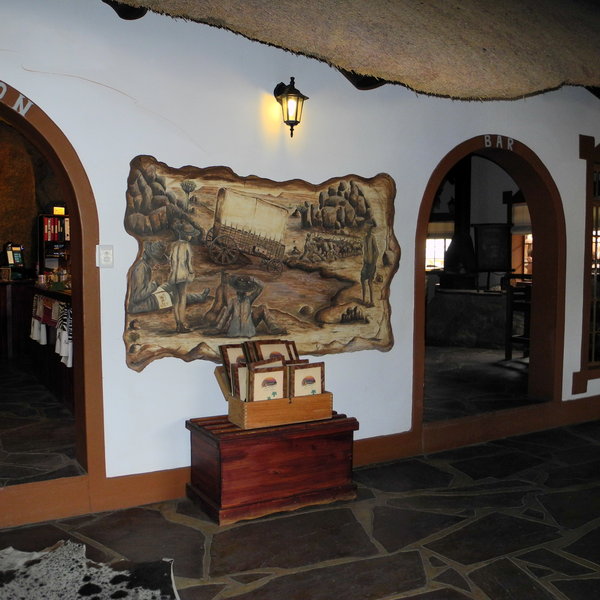
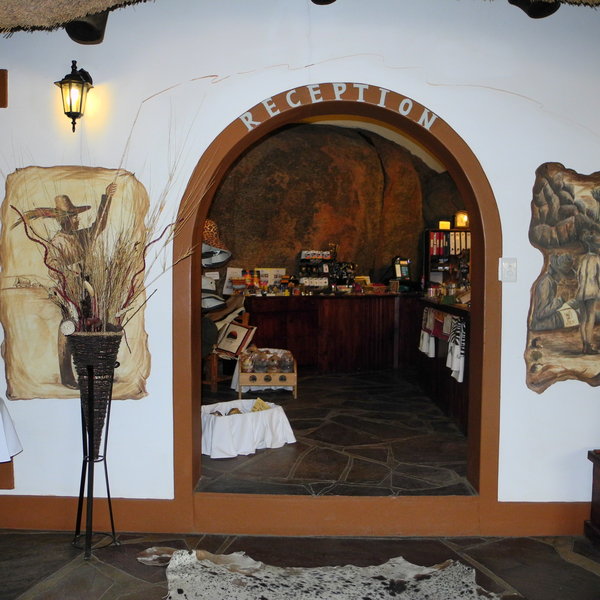
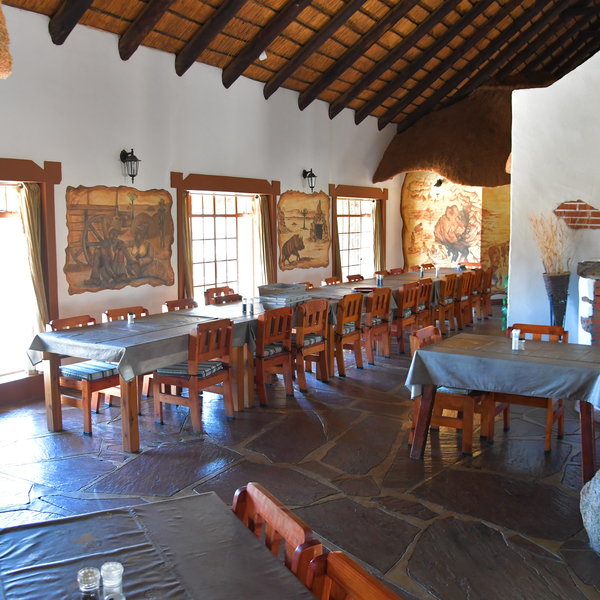
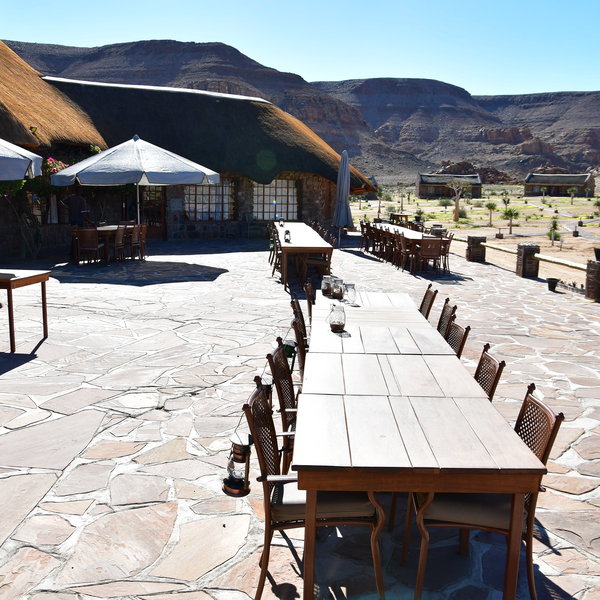
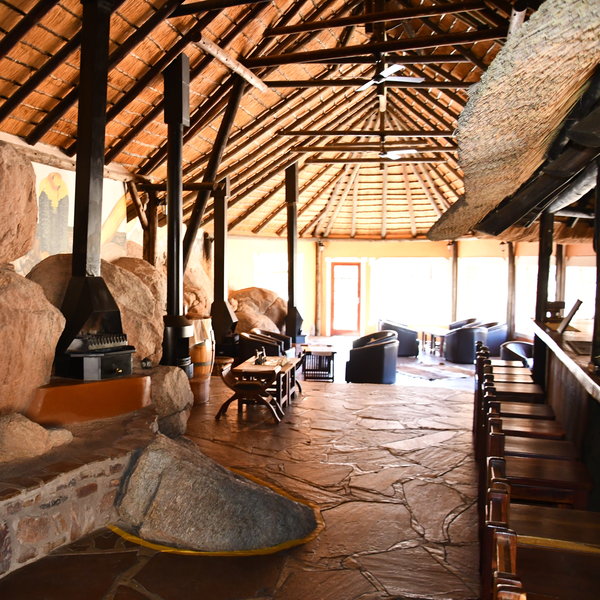
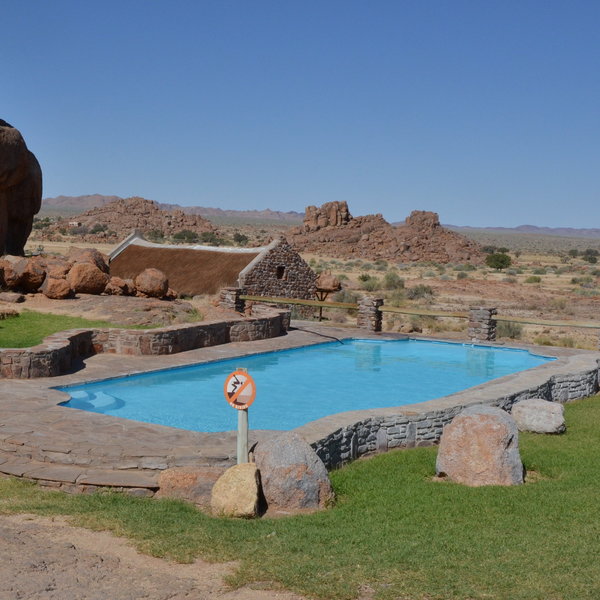
Expert Africa's gallery
When we travel we take lots of photos ourselves to give you a real and un-edited view of the safaris. See our 20 pictures of Canyon Village to get the candid view.
View gallerySafaris visiting Canyon Village
Just ideas, we'll always tailor-make a trip for you
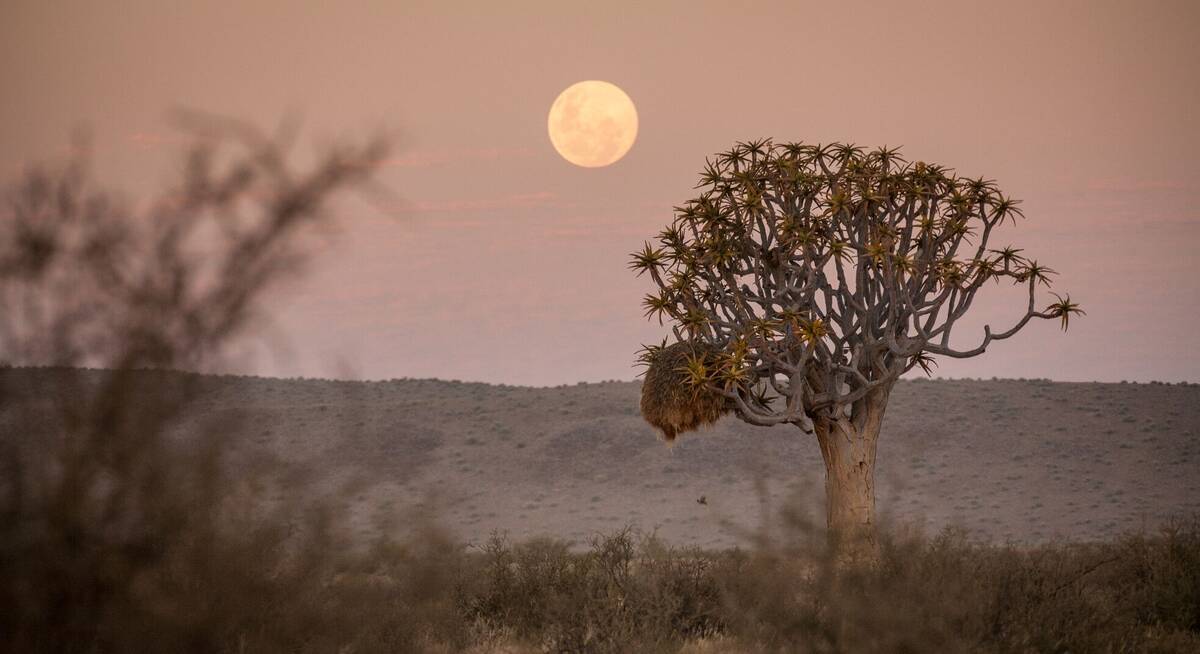
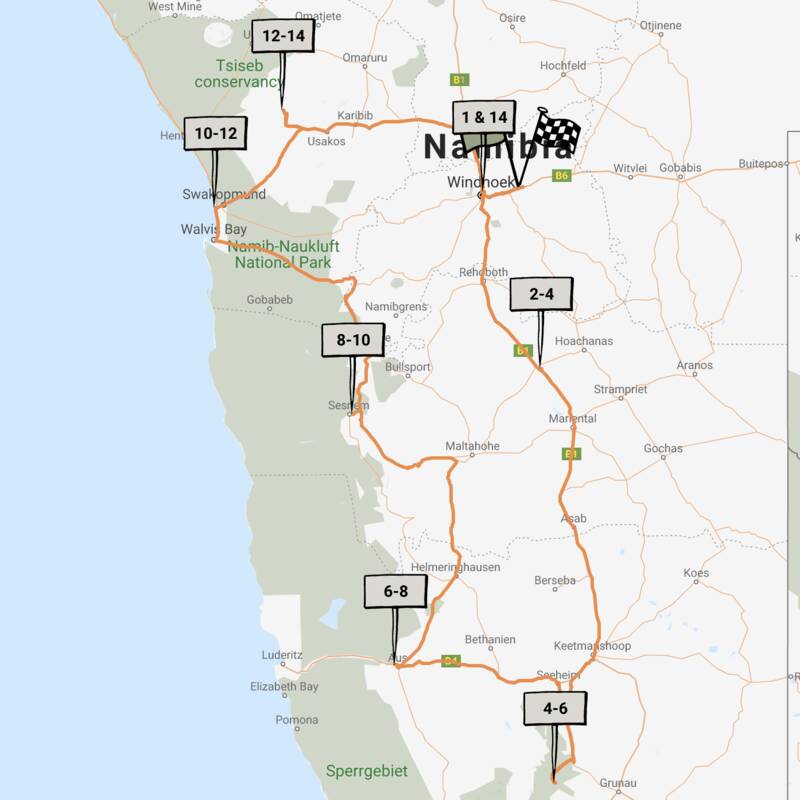
Quiver Tree Self-drive Safari
14 days • 7 locations • 1 country
WINDHOEK AIRPORT TO WINDHOEK AIRPORT
An offbeat Namibian self-drive adventure exploring the epic Fish River Canyon and fascinating Kolmanskop ghost town in the south, before turning north via the classic highlights of Sossusvlei, Swakopmund and Damaraland.
Visiting Luderitz & Aus, Fish River Canyon and 5 other areas
US$3,580 - US$3,790 per person
Canyon Village: Our full report
Close to Namibia’s Fish River Canyon, Canyon Village (previously called Canon or Cañon Village) is beautiful ...
... located at the base of a number of bare rocky hills, or kopjes, in the middle of a vast rocky landscape. Although the lodge is modern, a traditional feel comes from a series of attractive murals that depict various scenes from when the Nama people used to inhabit the region.
Just 1.5km from Canyon Lodge, within the private Gondwana Canyon Park, Canyon Village feels very different to this and its other sibling, Canyon Roadhouse. Its popularity with large groups may not suit some independent travellers, but others may like the busier atmosphere. Its 42 chalets are comfortable if relatively basic. Each is built of stone and cement under thatch, and is perfectly functional and well-designed. The windows have mesh screens to keep out insects and mosquitoes, whilst letting in the breeze. Air conditioning helps to cool the air in the hotter summer months, while during the winter additional blankets are provided for the beds.
Apart from a couple of hand-woven Ovambo baskets, the only other decoration is a hand-painted mural above the twin beds. You’ll also find mosquito nets and bedside lights, a safe, a wooden chest, a small table and chair, and a wooden wardrobe, while in the spacious en-suite bathroom are a hot-and-cold shower, washbasin with soap dispenser and mirror – but no electric points.
Three of the chalets are designed with families in mind and have inter-connecting doors between the rooms.
The main areas of Canyon Village are cool and airy, with the occasional bird flying in and out through the open windows. We couldn’t stay on our last visit, in May 2018, but on a previous occasion we were so warmly received by the staff that on our last day we wanted to put off our departure as long as possible – the sort of hospitality that really makes a difference.
Right in the centre of the lodge, and rather unexpected, is a coffee house, where the team serves tea and coffee all day and into the evening, accompanied by home-baked biscuits and cake.
The dining tables in the restaurant are well-spaced around the coffee house, giving a sense of privacy during meals despite the lodge’s size. We found the waiting staff to be friendly and helpful, yet non-intrusive. As you choose your food at the buffet, don't miss the spectacular back wall, built around natural boulders like those that make up the surrounding hills. There's even a huge rounded boulder that almost obscures the public toilets.
Just off the restaurant, in a lovely bar area with comfortable bar stools, a CD of Namibian music is occasionally played to set the mood. The lodge also boasts a very well-stocked curio shop, including a range of gifts and colourful sarongs as well as practical necessities such as sunscreen.
Although Canyon Village does not have a designated lounge, they do have a lovely large, shaded outside area. This is furnished with long tables and benches and is a good place to sit and enjoy your surroundings. Built around some boulders there's also an open-side “lapa” under thatch, where barbecue dinners are served every Tuesday.
The swimming pool at Canyon Village is set relatively far away from the rooms and main area, so guests can chat and splash about without disturbing others. Despite being unheated the pool is very much the place to be during the summer, judging by its popularity when we last visited. We are sure this is helped by the honesty bar, which saves you having to walk back to the main area for a cool drink.
Activities at Canyon Village are often taken in conjunction with guests from its sister properties, Canyon Lodge and Canyon Roadhouse, and include guided and self-guided walking trails, drives to the canyon and in the Gondwana Canyon Park incliding sundowner drives. Alternatively, you can just relax by the pool and take in the surroundings. This area is at its most spectacular in the early morning and evening light – when the landscape glows a deep red, and the opportunities for photography are excellent.
Activities
4WD Safari
Guided walking safari
Horse-riding
Private activities
Self-guided walking
Families & children
- Attitude towards children
- Children are welcome at Canyon Village
- Property’s age restrictions
- None
- Special activities & services
- There are no specific provisions for young children here.
- Equipment
- Cots and highchairs can be arranged on request.
- Generally recommended for children
- With plenty of space and a relatively relaxed atmosphere we feel that Canyon Village suits families well.
- Notes
- With an unfenced, unguarded pool we recommend that children are supervised at all times.
Food & drink
- Usual board basis
- Half Board
- Food quality
- We didn't have time to eat at Canyon Village on our last visit in May 2018, but on previous stays the food was delicious and varied, beautifully presented, and with a good selection at all meals, including a variety of hot dishes as well as fresh salads. Much of the produce here comes from the Gondwana Collection’s farm at Kalahari Farmhouse.
Breakfast is a buffet, with a variety of fresh fruit, cereals, cold meats and yoghurts. You can also order a cooked breakfast.
Lunch is from an à la carte menu, which includes salads, sandwiches and chips, as well as full meals.
For dinner, there are usually a couple of choices for starter and dessert, which are both served to your table. The main course is a buffet with a number of dishes, including a vegetarian option. On a previous visit we enjoyed a choice between vegetable fritters on layered melon and shredded lettuce, and brown lentil soup to start. The buffet offered a choice of fresh vegetables, good game meat from their own butcher and fresh salads. - Dining style
- Individual Tables
- Dining locations
- Indoor and Outdoor Dining
- Further dining info, including room service
- None
- Drinks included
- Drinks at Canyon Village are at an additional cost.
Our travellers’ wildlife sightings from Canyon Village
Since mid-2018, many of our travellers who stayed at Canyon Village have kindly recorded their wildlife sightings and shared them with us. The results are below. Click an animal to see more, and here to see more on our methodology.

100% success

67% success

0% success

0% success

0% success

0% success

0% success
Getting there
- Location
- Fish River Canyon, Namibia
- Ideal length of stay
- 2–3 nights
- Directions
- Located in the Gondwana Canyon Park, Canyon Village is a short drive from Hobas and the main viewpoint for Fish River Canyon.
- Accessible by
- Self-drive or Fly-and-Transfer
Special interests
- Family safaris
- The informal Canyon Village has plenty of space for children to play, a lovely pool and fun adjacent walking trails to explore, making it a good addition to a family holiday to Namibia.
- See ideas for Family safaris in Namibia
Communications
- Power supply notes
- There is a back-up generator in case of mains power failure.
- Communications
- There are phone facilities in the reception area for guests to use. There is no cell reception here. Free WiFi is available in the main area.
- TV & radio
- There is no radio or television at the Canyon Village.
- Water supply
- Borehole
- Water supply notes
- All rooms have hot and cold running water and flush toilets. The grey water from Canyon Village is pumped up to the Canyon Lodge water-recycling plant to help keep the gardens at both properties green.
Health & safety
- Malarial protection recommended
- No
- Medical care
- The nearest hospital is in Keetmanshoop. In case of emergency, guests can be airlifted to Windhoek from the airstrip at Canyon Lodge, which is 2km away.
- Dangerous animals
- Low Risk
- Security measures
- There are no security guards, but all the rooms have keys so that guests can lock their doors.
- Fire safety
- Although there are no fire extinguishers in the rooms, there are fire blankets in the kitchen in the main lodge area and fire extinguishers in the restaurant.
Useful info
- Disabled access
- On Request
- Laundry facilities
- Yes, but at an extra charge, and only for guests staying two nights or more. Laundry that is handed in on the day of arrival will be returned to guests the following day.
- Money
- There is a safe in each room.
- Accepted payment on location
- Canyon Village accepts Visa and Mastercard payments, but not travellers' cheques. Cash payments may be made in Namibian dollars and South African rand.
Plan and book your trip with Expert Africa
All of our trips are tailor-made, so we'll always adapt them to suit you. Talk to an Expert and let us plan and arrange your perfect trip.

Talk to an Expert
Call or email us now! We’ll match you with the Specialist in our team who is best suited to help you. Then together we can start planning your trip.

Set up your itinerary
Based on our experience and your ideas, your specialist will create a detailed, costed itinerary. We’ll refine it together, until we have a trip that you’re perfectly happy with.

Prepare for your trip
The same Specialist will make the seamless arrangements for your trip, send you detailed travel documents, and be available to answer any questions before you depart.

Travel with peace of mind
After you set off, you’ll be cared for by our partners in Africa, most of whom have worked with Expert Africa for decades. And if you ever need us urgently, we’re available 24/7.

When you return
We love to learn about your trip, and so will always be grateful if you’ve the time to give feedback to your Specialist when you return.
Canyon Village's location
Look closer at the environment and surroundings of Canyon Village.
Other lodges in Fish River Canyon
Alternative places to stay in this same area.
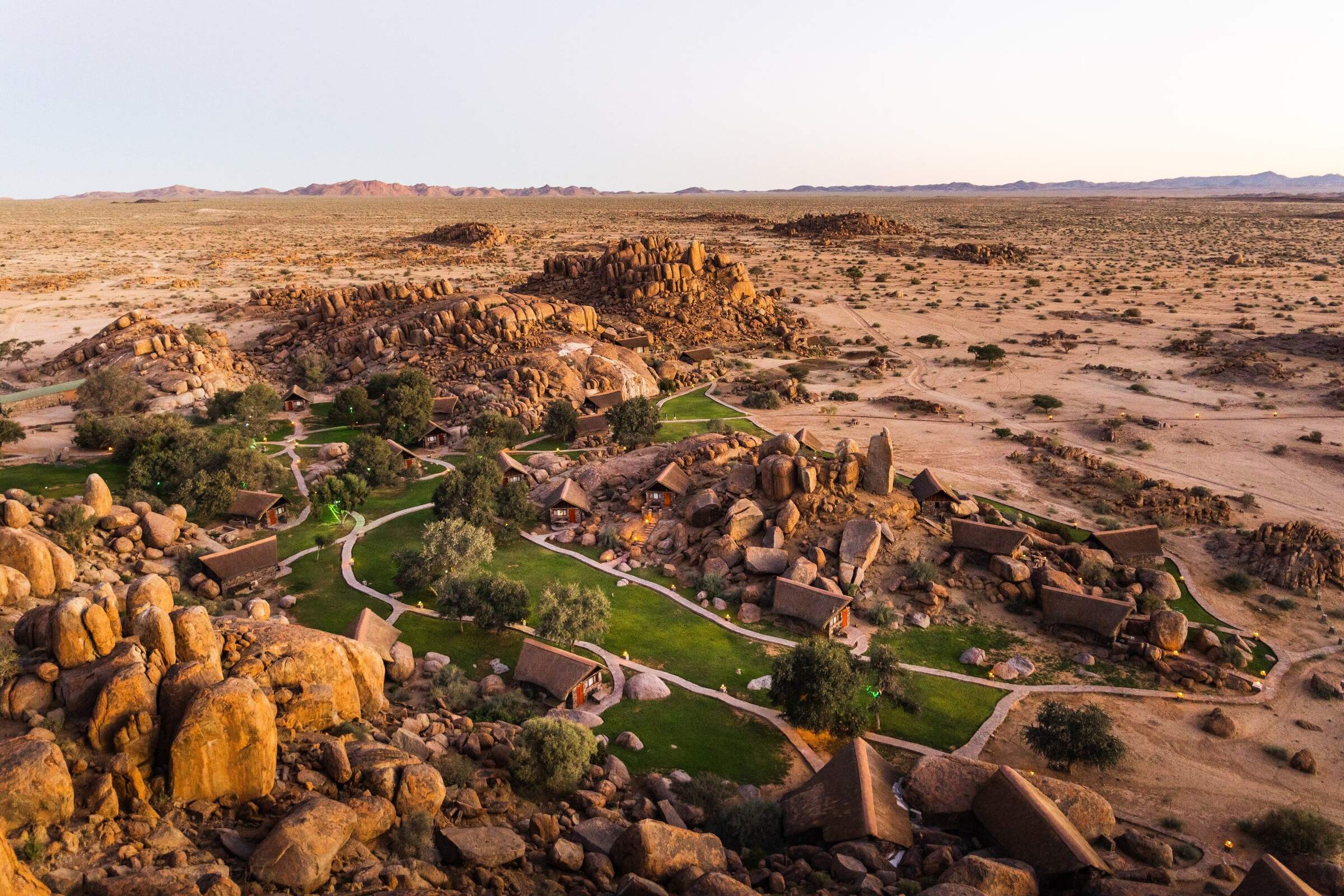
Canyon Lodge
Just 20km from Fish River Canyon, Canyon Lodge was the first lodge in the area, with individual chalets built amongst huge granite boulders.
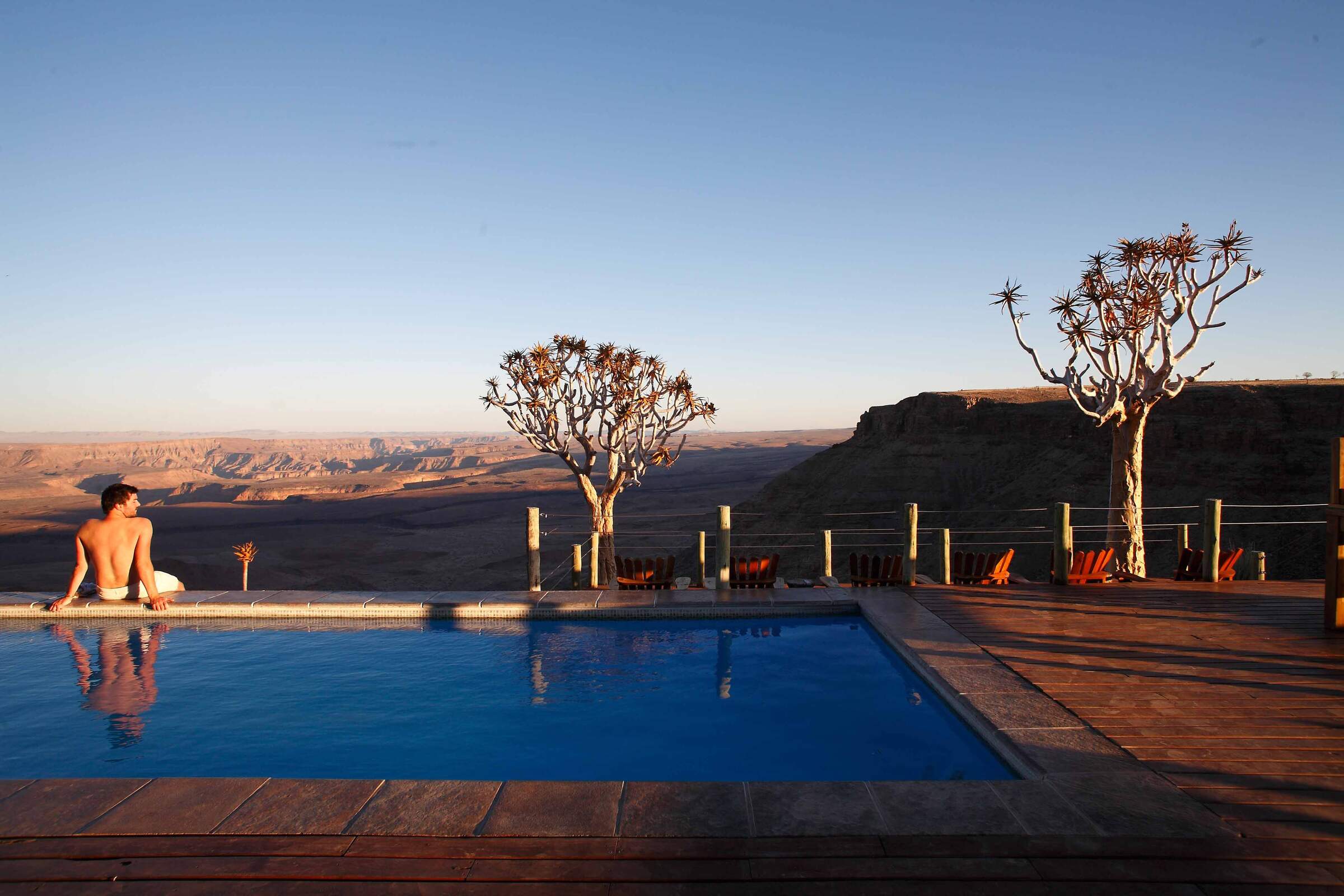
Fish River Lodge
Perched on the lip of Fish River Canyon, Fish River Lodge has some of the best views of any lodge in Namibia.
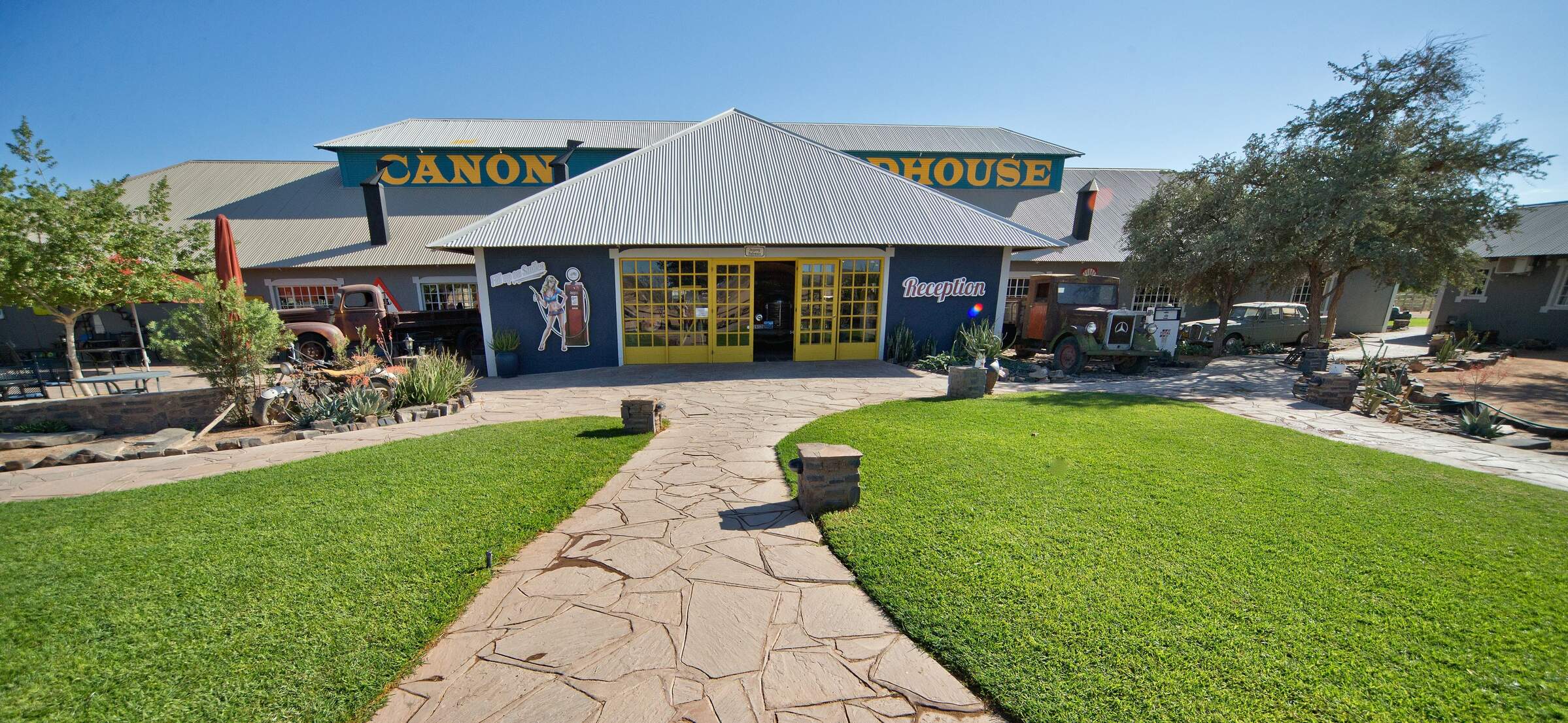
Canyon Roadhouse
Relatively close to Fish River Canyon, Canyon Roadhouse combines the feel of an old farm with an extraordinary array motor memorabilia.
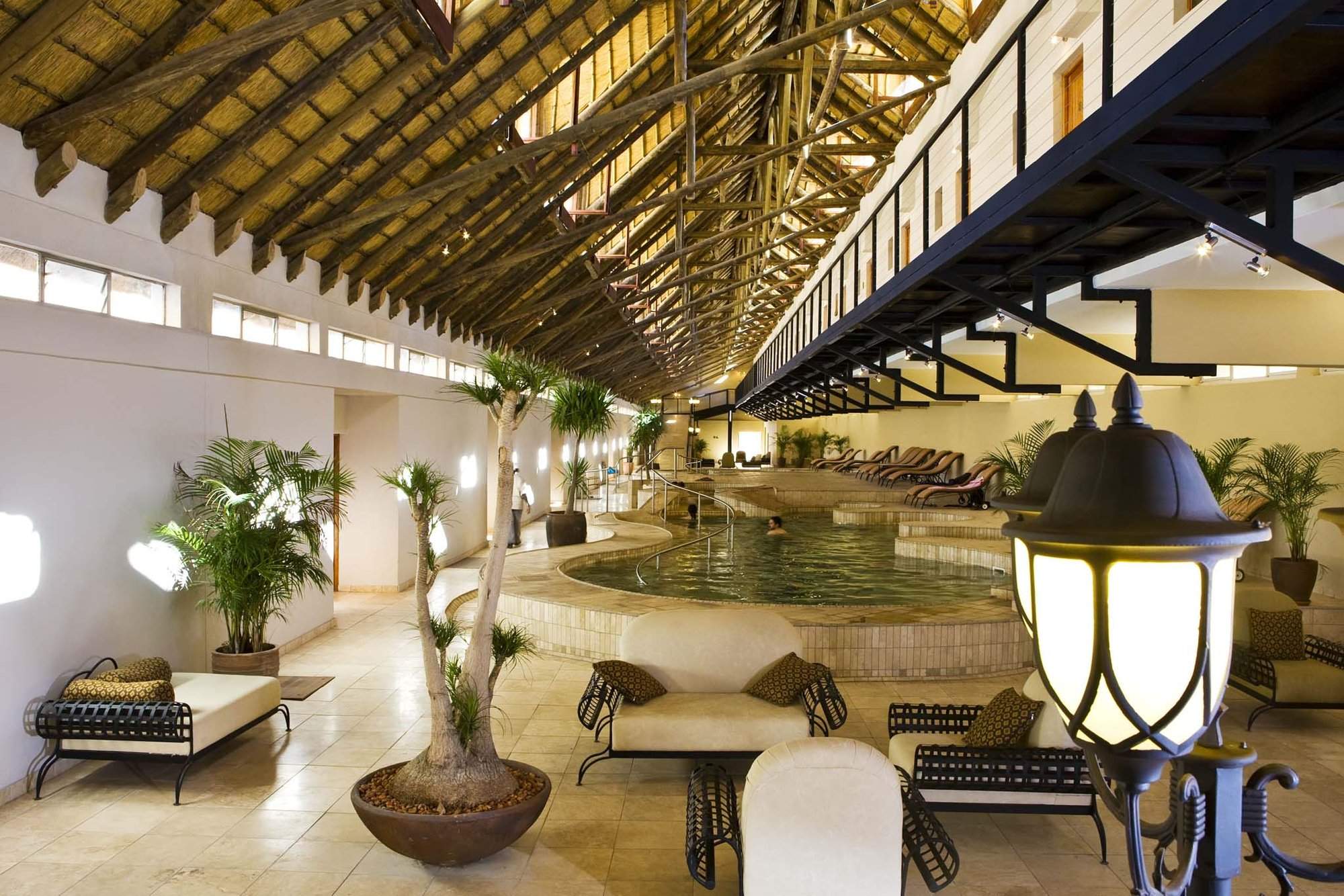
Ai-Ais Hot Springs Spa
The government-run Ai-Ais Restcamp is situated on a site of natural hot springs, down at the bottom of the Fish River Canyon.
When to go to Fish River Canyon
Our month by month guide: What it's like to visit Canyon Village in Fish River Canyon
Jan
Feb
Mar
Apr
May
Jun
Jul
Aug
Sep
Oct
Nov
Dec
Namibia in January
January is at the heart of Namibia’s rainy season. However, as you’d expect from a country dominated by desert and semi-desert environments, the rains are often (but not always) weak and usually quite localised. Some days will be clear, the strong sun raising temperatures to around 30ºC/86ºF; on others humidity and clouds build, sometimes culminating in spectacular thunderstorms. In extreme cases, these generate flash-floods which race down the beds of ephemeral rivers.
Across the country, the greening landscape makes a refreshing change, especially in desert areas. Many birds are in full breeding plumage and migrant species are here in force. In the north, where the rains are more reliable, the abundant water and food allows wildlife to disperse, making it trickier to spot.
- Variable weather: clear, hot & dry, or cloudy & humid with some rain
- Occasional, highly localised thunderstorms
- Many animals with young; birdlife at its most spectacular
- Wildlife dispersed & harder to see, especially in Etosha & the Caprivi
- Very few tourists (apart from the New Year) so rates mostly low
Our view
This is not a great time to visit
Weather in January
Namibia in February
February is the wettest month, but as Namibia is dominated by deserts, the rains are often weak and patchy. The variation in weather across Namibia is significant, too; the central highlands and Caprivi can see some heavy rain. More typically, some February days are clear with a hot, strong sun; others are cooler as cloudy skies build and, sometimes, culminate in short, spectacular thunderstorms. Occasionally these generate flash-floods, bringing ephemeral rivers to life and making travel more challenging.
Across the country, the landscape feels green and alive; insects and smaller animals are more easily seen, and many birds and animals are raising their young. However, small pools in the bush and thicker vegetation can make it hard to spot the wildlife.
- Variable weather: clear, hot & dry or cloudy & humid with some rain
- Occasional localised thunderstorms meander over the landscape
- The bush feels alive; birdlife is at its most spectacular
- Wildlife in Etosha & Caprivi is dispersed & harder to see
- Few tourists, so rates usually at their lowest
Our view
This is not a great time to visit
Weather in February
Namibia in March
March usually sees Namibia’s main rains tailing off, although actual precipitation varies hugely across the country and can be unpredictable from day to day. Many days will be clear, with a strong sun driving temperatures up. On others, clouds will build, and the late afternoon may see a short, spectacular thunderstorm. Such deluges reduce in both frequency and volume as the month progresses.
Across the country, landscapes are often vivid: a “green and pleasant land”. Many birds and animals are finishing raising their young, so smaller animals and insects are in evidence. In the north, where rains are generally heavier, pools in the bush and thicker vegetation can make it difficult to spot larger animals.
- Variable weather: clear, hot & dry or cloudy & humid with some rain
- Afternoon thunderstorms less common as March progresses
- Animals looking sleek and well-fed, after 3–4 months of plenty
- Wildlife in Etosha & Caprivi is dispersed & harder to see
- Few tourists visit during March, so rates often low
Our view
A good time to visit, with pros & cons
Weather in March
Namibia in April
Typically, April is dominated by dry weather; there’s an ever-decreasing chance of rain. Temperatures are now below their peak and continue to fall. Even so, days remain pleasant and warm, but there might be a slight chill in the air at night. The rains usually leave many parts of the country verdant and green, so animals are in fantastic condition – often with fast-growing young in attendance.
With the dust washed out of the atmosphere, photographers make the most of clear air, spectacular landscapes and healthy animals. Stargazers will have clearer night skies as the month progresses. In the game parks of Northern Namibia, water and food remain in plentiful supply, so finding big game can prove trickier than later in the year.
- Becoming drier &, especially at night, also cooler
- Few visitors, except around Easter, so rates remain low
- Wildlife in Etosha & Caprivi remains relatively hard to see
- Migrant birds have started to leave
- Fresh, clean air and often green, verdant landscapes
Our view
A good time to visit, with pros & cons
Weather in April
Namibia in May
By May, Namibia is usually drying out fast as the rains have ended. If they’ve been good, then the land remains green, but wildlife starts to congregate at more permanent water sources. Over much of the country the air quality and clarity can be amazing, making this an ideal month for photography.
Typical days are warm, with crisp, clear mornings and clear blue skies. Evenings are usually cool, and temperatures may dip below 10ºC (50ºF) overnight. Many lodges still charge “low season” prices, although with Namibia’s increasing popularity in recent years, some have started to introduce higher “shoulder season” rates.
May’s good-value rates, increasingly good wildlife sightings, beautiful landscapes and crystal-clear air combine to make this one of our favourite months in Namibia.
- Lovely weather: dry, warm days & cool nights
- The country is drying out although many landscapes remain green
- Fantastic air clarity – ideal for keen photographers
- Visitor numbers are often still low, mirrored by lodge rates
- Wildlife is starting to congregate more around remaining water
Our view
A very good time to visit
Weather in May
Namibia in June
Namibia is dry again. Skies are blue and usually largely cloudless. Days are lovely: warm and dry; nights are cold, sometimes below freezing in the desert. Most swimming pools in Namibia are always outdoors, making them too cold for all except the very dedicated.
Take a warm hat and gloves for game drives, where dawn and dusk will feel particularly chilly. In the north, especially Etosha, wildlife viewing is now into its dry-season pattern, focusing around the waterholes – though the park is still not busy.
Photographers come for superb air clarity, with minimal dust or smoke in the air. Historically, June rates have been low. However, with Namibia’s increasing popularity many lodges now count it amongst their “high-season” months, and request higher prices.
- Clear, bright days with blue skies; cold nights, mornings & evenings
- Great air quality, especially welcome for photographers
- “Shoulder season” for some lodges: lodge rates moderate
- Wildlife gravitates to waterholes, making game-viewing productive
- Some greenery in the landscape, depending on the last rains
Our view
A very good time to visit
Weather in June
Namibia in July
Reliably warm daytime temperatures (upwards of 20ºC/70ºF) and good wildlife sightings make this a popular month to visit Namibia. Rain would be very unusual indeed and clear skies make for great photographs. Once the sun sets, though, temperatures cool rapidly bringing cold nights that may dip below freezing in the desert. Be prepared: dress in layers and expect early-morning and late-afternoon drives, and anywhere coastal, to be cold.
As the land dries and vegetation shrivels, game congregates beside drinking water: Etosha’s waterholes are busy with animals. Across the country, lodges charge “high season” rates; many are fully booked a year or more in advance, especially during European school holidays (from the latter half of July to late August).
- Dry days, warm in the sun, with crisp, cold nights
- Cloudless skies: July is usually superb for stargazing
- The beginning of European school holidays so more families travelling
- Peak season: so high rates and many lodges fully booked far in advance
- A fantastic time of year for wildlife watching, particularly in Etosha
Our view
A very good time to visit
Weather in July
Namibia in August
August is the height of Namibia’s “winter”. Expect cloudless skies and plenty of warm sun in the day, but nights down to freezing in the desert. Dress in layers and bring warm clothes (including hats and gloves) for chilly starts and evenings. Only the hardiest even contemplate using outdoor pools.
It’s 3–4 months since any rain, so the land is dust-dry and much vegetation is golden brown. Many landscapes appear sparse and harsh. Wildlife congregates around available water sources, helping to guarantee good animal sightings.
Namibia is never really “busy” by the standards of Europe or the USA, but August is the most popular time to visit, especially for families. Book early (over a year in advance) if you want to stay at the best lodges.
- Dry days, warm in the sun; cold mornings, evenings & nights
- Cloudless skies in the day; spectacular stars at night
- Busy by Namibian standards: family rooms in particular demand
- Peak season: so high rates and many lodges fully booked far in advance
- A fantastic time of year for wildlife watching, particularly in Etosha
Our view
Fantastic: the very best time to visit
Weather in August
Namibia in September
September is a month of blue, cloudless skies and fantastic wildlife viewing. Rain is almost unheard of. As the month progresses, the days and nights get warmer. In some areas, daily maximums hit around the low 30s Celsius, although low humidity ensures this feels comfortable. The contrast makes the nights seem very cold. The air is becoming dustier, occasionally augmented by smoke from fires – so becoming hazy for photographic purists.
In the national parks, animals congregate around remaining water sources – making September one of the best months for game viewing. Hence it’s one of Namibia’s most popular months for visitors: a “high season” month that is often the time of choice for safari aficionados.
- One of the best months for wildlife viewing
- Warm days & cold nights, with temperatures rising during the month
- Many plants have faded from green to golden brown
- Air can be hazy – with dust & sometimes smoke
- High season rates; many lodges & camps are full 9 months in advance.
Our view
Fantastic: the very best time to visit
Weather in September
Namibia in October
Namibia is usually at its hottest and driest in October. Temperatures build as the month progresses; towards the end, daily highs may exceed 40ºC/100ºF, though with humidity close to zero, even this rarely feels oppressive.
In exceptional years, isolated rain showers may fall in late October. More usually, the end of the dry season sees wildlife watching at its best, particularly in Etosha. The place feels like a desert as spectacular herds of thirsty animals gather around the available water. October is popular amongst wildlife enthusiasts and commands peak-season prices, even if dust and smoke may make the air hazy, challenging photographers. Visitor numbers can fade towards the end of the month, allowing a window for last-minute bookings.
- Probably the most spectacular month for wildlife-viewing in Etosha
- Hot and dry: much of the country feels like a desert
- The air can be hazy with dust & smoke
- It’s peak time to visit, so expect high season rates
- Lodges & camps are full, especially early in October
Our view
A very good time to visit
Weather in October
Namibia in November
November is always a bit unpredictable: sometimes dry and hot; sometimes cloudier and cooler. Typically, mornings are hot and cloudless and clouds appear in the afternoon. Humidity builds and eventually breaks, resulting in spectacular thunderstorms that bring convection rainfall in late afternoons. Such storms are typically sparsely distributed and highly local – being completely absent from desert areas, for example. Places that do get good rain will flush green, with a tangible feeling of new life softening the landscapes. Many mammals give birth to their young.
Once any rains come, wildlife dissipates in search of food, and game viewing in Etosha becomes harder. Conversely, this is a great time for birdwatchers, with migrant species in breeding plumage.
- A very interesting, variable month, depending on the rains
- With rains come an amazing explosion of both vegetation & new life
- Wildlife viewing better in Damaraland than Etosha if it has rained
- Shoulder season: mid-range rates offer great value
- Away from the Namib, showers are more likely later in the month
Our view
A good time to visit, with pros & cons
Weather in November
Namibia in December
December is the first “proper” month of Namibia’s rainy season, and one of its hottest. Clear mornings give way to building clouds and, with luck, the occasional short, spectacular thunderstorm: refreshing and cleansing. These are often highly localised and generally warmly welcomed: most Namibians love rain!
Rains clear the air of dust. Even relatively short showers enable plant life to erupt, carpeting this thirstland in green and providing food for the young animals which abound. Animals disperse widely, which can make game viewing challenging. Many birds are breeding and so sporting their most colourful plumage.
Christmas and the New Year fall within local “summer holidays” – so places to stay can be surprisingly busy, especially in and around coastal towns, where temperatures are cooler.
- Hot and humid; sometimes refreshed by cooling showers
- Landscapes flushed green if/where there has been rain
- A tangible life and energy amidst this often green & pleasant land
- Very photogenic: blooming deserts amidst crystal-clear air
- Best time for birdwatchers; larger animals harder to spot
Our view
This is not a great time to visit
Weather in December

Looking for inspiration on where to travel next?
Visit our trip chooser to explore your options and find inspiration for your perfect African adventure
Inspire me